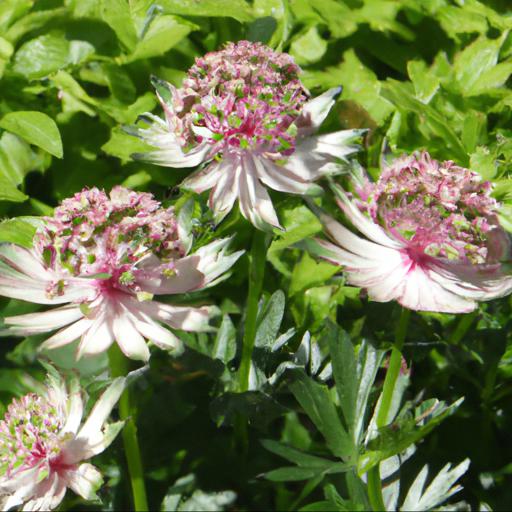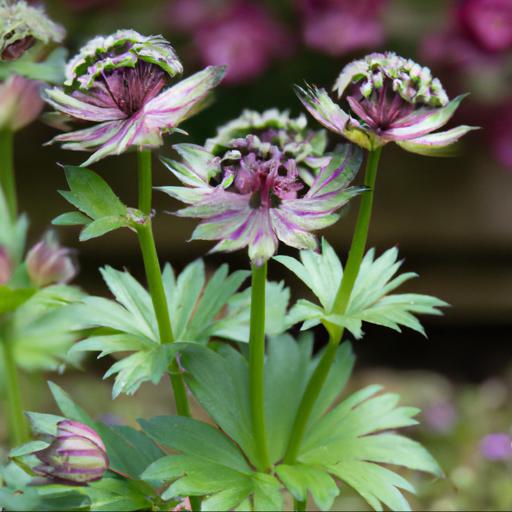Are you looking for ways to make your astrantia plants thrive? Growing astrantias can be a rewarding experience, but it does require a bit of know-how.
In this blog, we’ll be discussing three tips for growing astrantias successfully. We’ll be exploring the best soil and light conditions for these plants, as well as the best way to keep them watered. With these tips, you’ll be able to create a healthy and vibrant garden of astrantias.
So, let’s get started!
Three tips for growing astrantias

If you are looking for a beautiful, long-lasting addition to your garden, astrantias could be the perfect choice. Astrantias are a group of perennially flowering plants that are incredibly easy to grow and maintain, making them incredibly popular among gardeners all over the world. Here are three tips for growing astrantias to ensure your garden looks amazing all year round:Firstly, as all astrantias are perennials, regular pruning should be part of your gardening regime.
This will ensure that your flowers are kept tidy and in check, as these plants can grow quite quickly. Pruning will also help to promote healthier and more vigorous growth, resulting in a fuller and more attractive flower bed.
To prune, simply remove any dead or unhealthy leaves and stems, as well as any flower heads that have gone to seed. Secondly, astrantias need to be regularly fed, as they’re heavy feeders. A slow-release fertilizer should be applied every few weeks to promote strong, healthy growth and brighter, more vibrant blooms.
During the summer months, you should switch to an organic liquid fertilizer, such as comfrey tea, which can provide the necessary nutrients for growth and blooming. Finally, an important factor for growing astrantias successfully is making sure they are planted in a spot where they will get plenty of sun.
Full-sun to partial-shade is best for these plants, which will allow them to bloom freely and encourage lush growth. When choosing a spot for your astrantias, keep in mind that these plants can get quite tall – up to 2 feet – so you’ll want to make sure that they are spaced out appropriately and won’t overcrowd the rest of your plants.
By following these simple tips, you’ll be able to enjoy a beautiful garden of astrantias all year round. With just a little bit of care and attention, these plants are sure to brighten up any garden and add a touch of elegance.
Tip 1: choose the right location

Having a garden is an enjoyable way to get closer to nature. However, growing an astrantia can be tricky if you don’t know the correct way to care for it. Fortunately, there are three main tips to keep your astrantias looking vibrant and healthy.
The first key tip to remember when tending to astrantias is to choose the right location. When selecting a spot for your astrantias, there are several key factors to consider.
A large part of the success of this bright-looking flower comes from its ability to thrive in moist, well-drained soil. Therefore, it’s important to allocate a space in your garden that has good drainage and enough moisture levels to maintain a well-balanced environment. A location that receives indirect sunlight is also ideal in order to ensure your astrantia has the necessary energy for its growth.
A second tip for maintaining your astrantia is to regularly remove spent blooms and dead leaves. Not only does removing faded blooms from the plant encourage a neat, uniform appearance, but it also helps promote new growth as the season progresses.
By judiciously snipping off any dead foliage, you can also help keep your plant looking and functioning at its best. Finally, don’t forget that astrantias are naturally heavy feeders.
Adequate fertilization is a must if you want your flowers to reach their full potential. A slow-release fertilizer that is made specifically for flowering plants is recommended for optimal nourishment throughout the growing season. With these three steps in mind, you are sure to have a flourishing astrantia that will be the envy of the neighborhood.
Tip 2: plant in well-draining soil

Three tips for growing astrantias successfully is an important subject for gardeners who wish to add this elegant flower to their garden. Tip 2: Plant in Well-Draining Soil is particularly important when it comes to astrantias, as they can suffer terribly in waterlogged soil. Well-draining soil is essential for astrantias, as the plant’s roots do not respond well to the long-term sogginess that can result from soils with poor drainage.
Poorly-draining soil can and will eventually drown the plants. In order to promote drainage, it is important to add compost or some other type of organic matter to the planting area.
This will break up clay soils as well as any other soil that is waterlogged. In addition, improving the biodiversity of the soil with native microorganisms and worms, which helps the soil retain aeration, will also help drainage.
When selecting the spot for planting, keep in mind that the most satisfactory soil for astrantias is a combination of 50% loamy soil and 50% sand, as both are composed of smaller particles that help drainage. It is also helpful to create raised flowerbeds, keeping the soil higher than the surrounding area. Doing so will ensure the water runs off away from the astrantias and doesn’t pool around them.
Wherever you plant your astrantias, make sure that your soil drains well and provides a good environment for these beautiful flowers.
Tip 3: water and fertilize regularly
:Growing astrantias in a flower bed can be a rewarding experience and they make excellent cut flowers. While they can look quite delicate, they actually don’t need too much attention to thrive. However, there are three key tips to keep in mind if you want your astrantias to stay in tip-top condition: water and fertilize regularly, plant in a sunny spot and provide some protection.
When it comes to watering and fertilizing your astrantias regularly, it’s important to find the right balance. Too little and you’ll end up with pale, limp flowers; too much and you risk overwatering or burning with fertilizers.
Aim to keep the soil moist but not sodden to a depth of at least 10cm and supplement if necessary with a liquid fertilizer, alternating between nitrogen and phosphate-based. In terms of positioning, astrantias flourish in sunny spots but also tolerate partial shade. Aim for as much sun as possible, as it’ll encourage the flowers to open for longer and give them a better chance at producing seed heads.
An ideal site will have morning sun, protection from the sun’s harsher rays during the day and shelter from strong winds. Keep in mind that plenty of air movement and good air circulation helps to reduce the risk of disease, so don’t be afraid to give them a bit of a prune.
Finally, with late spring frosts possible up until late May, you can wrap your astrantia plants in horticultural fleece on cold nights to keep them safe. This also applies to plants on a balcony, as the temperature can drop considerably in the night.
All in all, by following these three simple tips you can be sure that your astrantias will thrive throughout the season and provide a beautiful cut flower and many seeds if you want to continue growing them into the future.
Our video recommendation
Bottom Line
Grow astrantias for an eye-catching display of colour and texture in the garden. Here are three tips for success: provide plenty of sun and moist soil, deadhead regularly to promote more blooms, and add a layer of mulch to retain moisture.
With these tips, you can enjoy a beautiful astrantia display in your garden.
FAQ
What are the best soil conditions for growing astrantias?
The best soil conditions for growing astrantias are moist, well-drained, humus-rich soil in a sunny or partially shaded position.
How often should astrantias be watered?
Astrantias should be watered when the top inch of soil feels dry. They prefer to be kept slightly moist but not soggy.
What is the best way to propagate astrantias?
The best way to propagate astrantias is by division. This can be done in spring or autumn by carefully digging up the clumps of plants and dividing them into smaller sections, each with a good root system.
How much sunlight do astrantias need?
Astrantias need partial shade or dappled sunlight for best growth and flowering.
What pests and diseases should be watched out for when growing astrantias?
Common pests and diseases to watch out for when growing astrantias include aphids, slugs, snails, powdery mildew, and rust.
How can astrantias be encouraged to flower?
Astrantias can be encouraged to flower by providing them with full sun or partial shade, well-draining soil, regular watering, and regular fertilization. Deadheading spent flowers can also help encourage more blooms.

